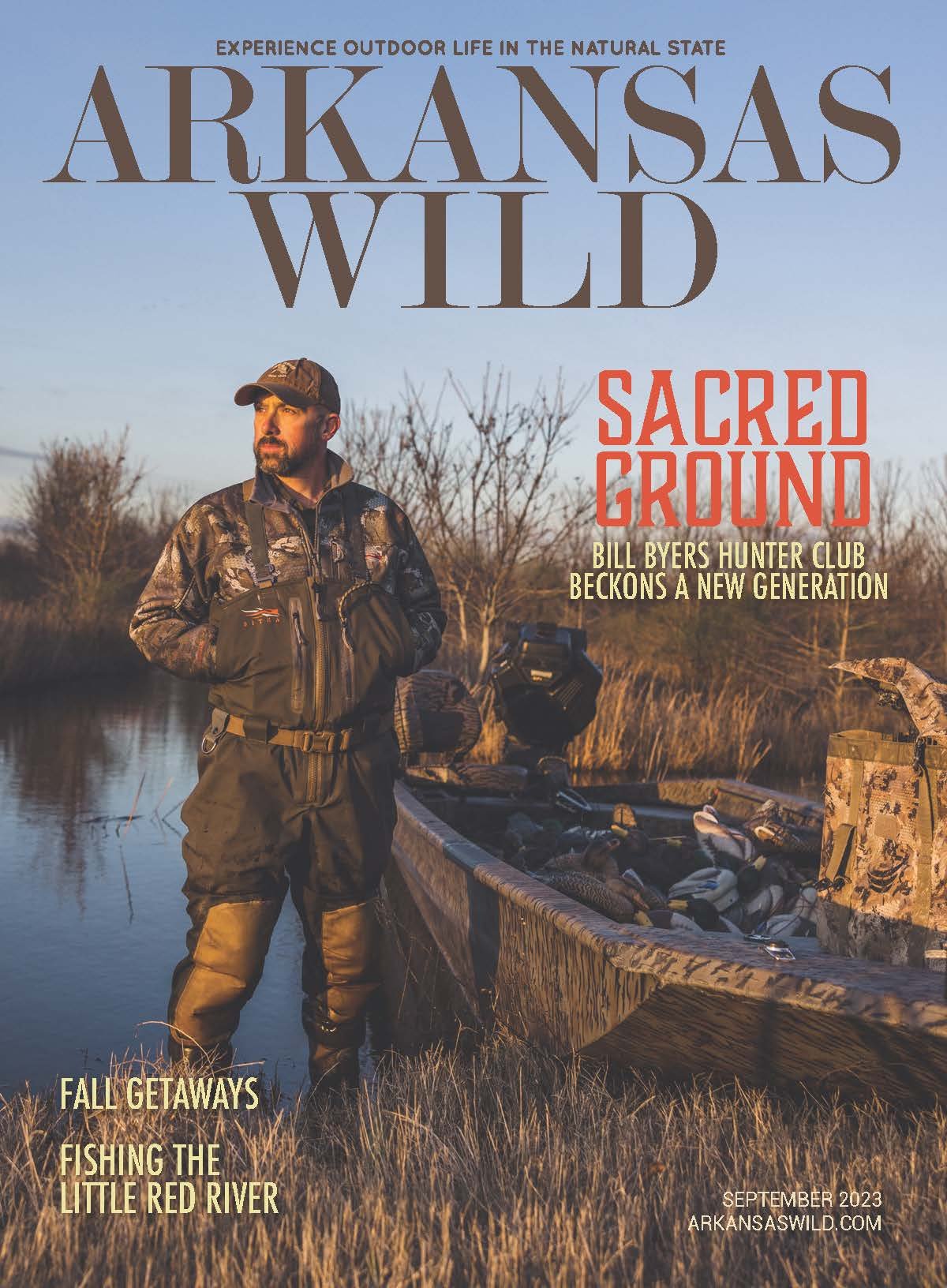Birds of a Feather
Partnership promotes conservation for hunters, farmers
By Mark Carter Photos: Ducks Unlimited
What’s good for rice is good for ducks, and working wetlands are good for people.
So explains Scott Manley, director of conservation innovation for Ducks Unlimited. DU is partnering with USA Rice to lead the Rice Stewardship Partnership (RSP), launched in 2013 to conserve the delicate balance of working ricelands, wetland wildlife and watersheds in Arkansas and the country’s other rice-growing states – Louisiana, Mississippi, Texas, Missouri and California.
“We protect what we love, and few appreciate the outdoors and wildlife as much as hunters,” Manley said.
Arkansas is the center of rice production in the U.S.—producing half of the nation’s output (1.5 million of 3 million acres)-—it is also big on ducks. The Arkansas Delta sits like a bullseye under the Mississippi Flyway; Luke Naylor of the Arkansas Game and Fish Commission calls it a funnel for mallard migration.
Arkansas leads the country in mallard harvest, taking more than a million over the course of the 2016 and 2017 seasons, according to the U.S. Fish & Wildlife Service. And it’s second in total duck harvest with about 2.1 million birds in 2016 and 2017. (California hunters harvest a virtual smorgasbord of ducks, from mallards and green-winged teal to northern pintail and wigeon, totaling 2.4 million birds in 2016-17.)
Given its predisposition for rice and ducks, Arkansas serves as an ideal laboratory for the Rice Stewardship Partnership. The project is largely funded by the U.S. Department of Agriculture through the federal farm bill and supported by a who’s who of public and private entities with a shared vision for conservation.
Producing half of the nation’s output, rice is Arkansas’s cash crop in every sense of the word.
Josh Hankins, director of grower relations and rice stewardship for USA Rice and based in Little Rock, said the partnership’s goal is to ensure the sustainability of rice agriculture in the U.S.
“Rice lands are working wetlands,” he said. “They provide wildlife habitat, water quality and quantity benefits, and many other wetland functions and values. The cost of replacing working ricelands with natural wetlands would exceed $3.5 billion.”
Since its launch, the RSP has been awarded eight Regional Conservation Partnership Project (RCPP) contracts across the six rice-growing states through the USDA Natural Resources Conservation Service. These projects are expected to be fully implemented by 2024 and will provide financial assistance of more than $80 million to rice producers for implementation of conservation practices.
The RSP now boasts a field team of more than 20 staff members who work with employees of the USDA Natural Resources Conservation Service at 90 field offices across the country.
One such RCPP project, launched earlier this year, targets rice growers in 30 counties in east and central Arkansas. Funded through the USDA Natural Resources Conservation Service, it aims to help farmers grow their operations while implementing conservation practices that ensure sustainability of the land.
By 2024, the RSP expects to have positively impacted more than 770,000 acres of rice and rice-rotation lands. And that’s good for ducks as well as people.
DU’s long history of working with rice growers and other farmers to promote conservation is testament to the symbiotic relationship of hunter and farmer. Though technology continues to reduce the number of farm hands needed and culture beckons young people to urban areas, those staying on the farm are embracing conservation.
“Of particular importance for the future of rice farming and conservation are the young, beginning farmers we serve,” said Andi Cooper, DU’s communications specialist for its southern region. “The national average for young farmers as primary operators in rice is just 8 percent. Through aggressive and targeted outreach efforts, 22 percent of RSP contract holders are young farmers. The next generation of farmers is embracing natural resource conservation, and we will be here to support them for years to come.”
Laudies Brantley is a third-generation Arkansas farmer who understands the balance that exists between hunting and farming. His Brantley Farms operates roughly 10,000 acres, mostly in southern Lonoke County, with roughly a fourth of the acreage devoted to rice. Once the harvest is in, his rice fields trade farmers focused on the ground for hunters watching the skies.
“For an old guy like me on the farm, to finally get a crop out and go hunting in November, it’s great fun,” he said. “It’s a very important part of our lives. What we’re doing is just standard procedure. The crop cycles and hunting season, it just all falls into place.”
The Rice Stewardship Partnership was created to help make sure that balance remains for future generations.
Rice Stewardship Partnership funders include the USDA Natural Resources Conservation Service, National Fish and Wildlife Foundation, Walmart Foundation, the Mosaic Company Foundation, Nestlé Purina PetCare, Chevron U.S.A., Freeport-McMoRan Foundation, Irene W. and C.B. Pennington Foundation, RiceTec, BASF, American Rice, Inc. – Riviana Foods, Inc., Delta Plastics, Anheuser-Busch InBev, Wells Fargo, Farmers Rice Milling Company, Horizon Ag, Turner’s Creek & Bombay Hook Farms, MacDon Industries, Dow AgroSciences, Riceland Foods and Ducks Unlimited major sponsors.




